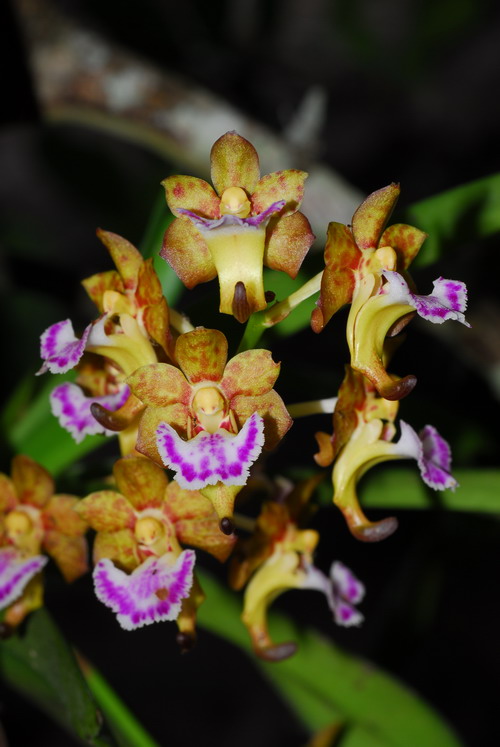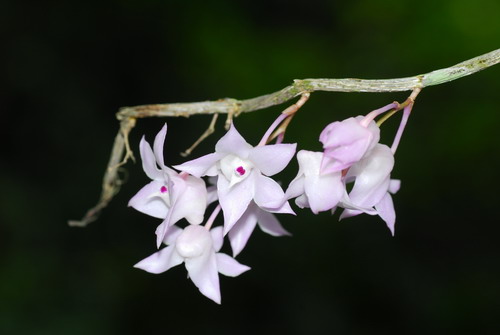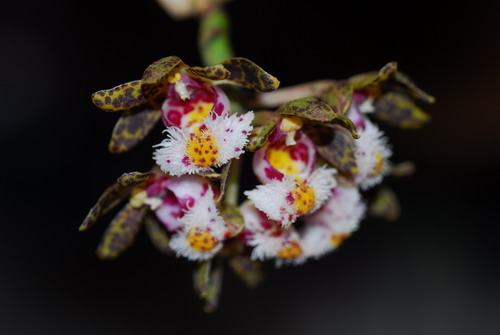Xishuangbanna, on the northern margins of tropical Asia, is one of the most orchid-rich areas in China according to systematic field surveys conducted in 1988 and 1992. As with much of tropical Asia, land use has changed greatly in Xishuangbanna in the past 20 years. Land use changes especially monoculture crops have threatened biodiversity. Orchids are extremely susceptible to habitat disturbance. Although the general threats to orchids are known, effective conservation requires the identification of priority species, sites, and threats.
Based on data from a 3-year field survey, Prof. GAO Jiangyun and his team of Xishuangbanna Tropical Botanical Garden (XTBG) assessed the current status of all orchid species in Xishuangbanna, analyzed the distribution of orchid species richness relative to habitat and elevation, and identified the major threats to orchids in Xishuangbanna. They then developed a conservation strategy for each threatened species to achieve an ultimate goal of zero extinctions (that entails the use of in and ex situ conservation, reintroduction, ecological restoration, and education to ensure that no additional native plant species become extinct in Xishuangbanna) in the orchid family.
The researchers studied all available publications, records, and data related to orchids of Xishuangbanna and examined all specimens in Chinese herbaria. They conducted field surveys on 8 separate occasions during different seasons from April 2011 to December 2013. The scientists tried to seek how orchid species diversity in Xishuangbanna changed in the 20 years since the surveys conducted in 1988 and 1992. They then calculated how many orchid species were threatened and what the major threats were. Finally, they wanted to find ways to protect orchid from extinction in Xishuangbanna.
They identified 426 orchid species in 115 genera, and found 65 species in 36 genera new to Xishuangbanna, including two genera and four species new to China. The number of species recorded in Xishuangbanna increased from 335 species in 96 genera to 426 species in 115 genera, despite massive deforestation in the last 20 years. At elevation of 1000-2000 m, the orchid species richness was the highest.
According to their assessment, three species were evaluated as possibly extinct in the wild, 15 as critically endangered, 82 as endangered, 124 as vulnerable, 186 as least concern, and 16 as data deficient. Over-collection was the major threat to orchids, and utility values such as medicinal or ornamental value were significantly related to endangerment. Rubber plantations were less of threat to orchids than to other plant species.
XTBG is committed to achieving zero plant extinctions in Xishuangbanna, with orchids as a high priority. It has developed and is implementing appropriate in and ex situ conservation strategies, including new protected areas and seed banking for every threatened orchid species. The approach seems to be effective in other parts of the tropics and subtropics to conserve species diversity.

Aerides flabellat

Dendrobium aduncum

Gastrochilus bellinus (Images by LIU Qiang)



